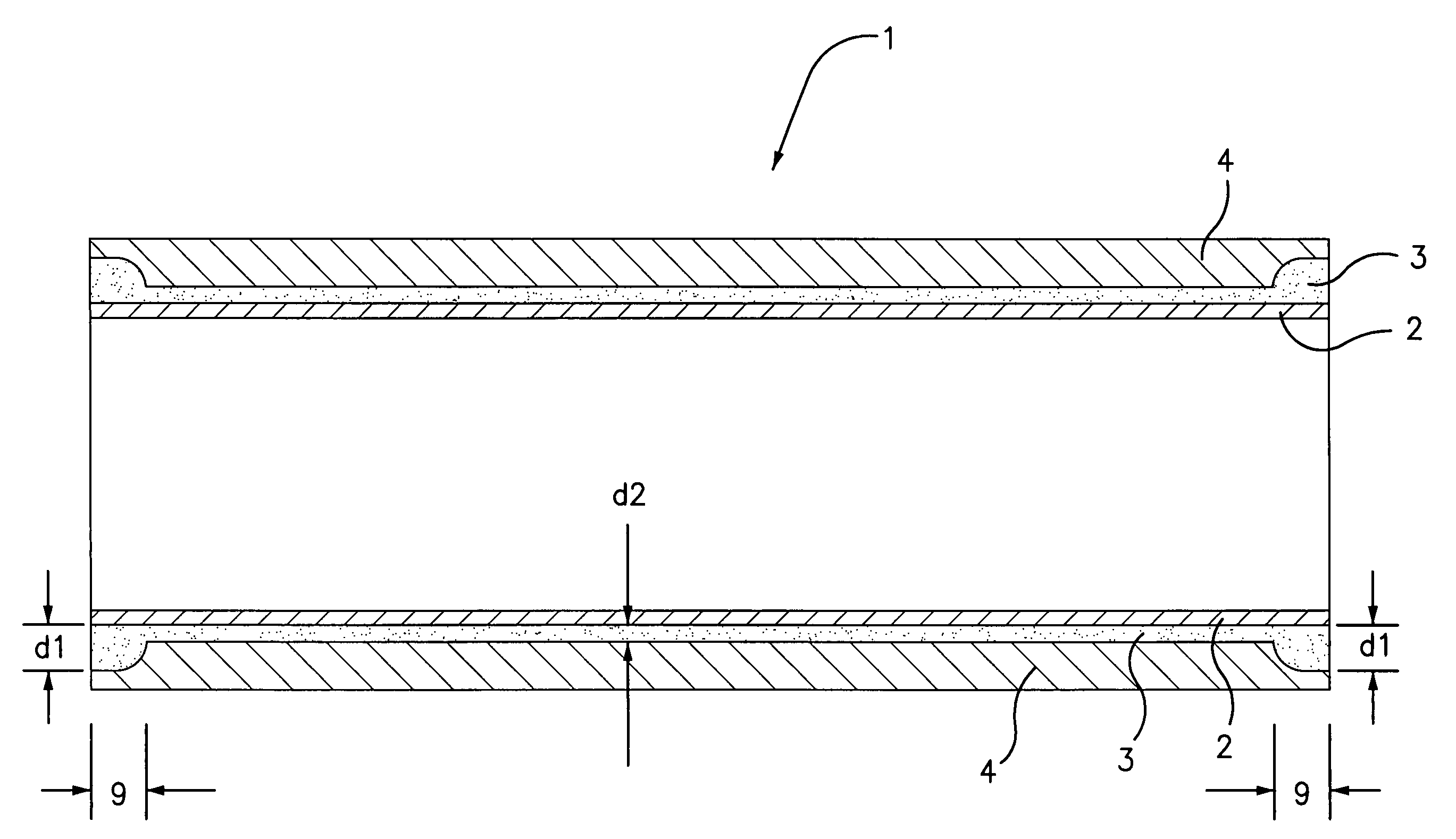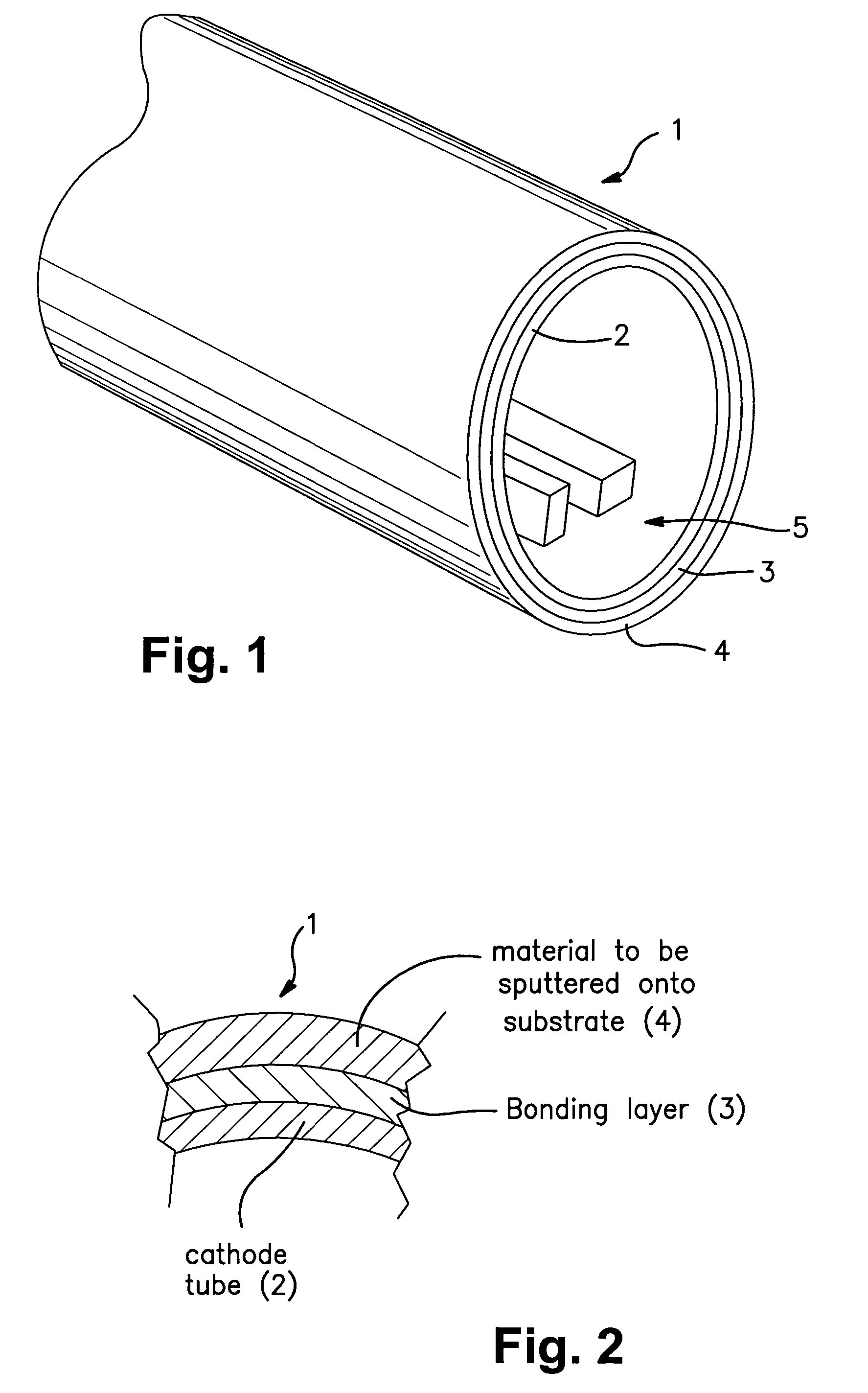Sputtering target with bonding layer of varying thickness under target material
a technology of target material and bonding layer, which is applied in the direction of electrolysis components, vacuum evaporation coatings, coatings, etc., can solve the problems of uneven or non-uniform erosion of sputtering material from the tube, undesirable burn-through, contamination of sputtered film on the substrate, etc., and achieve the effect of reducing the risk of burn-through
- Summary
- Abstract
- Description
- Claims
- Application Information
AI Technical Summary
Benefits of technology
Problems solved by technology
Method used
Image
Examples
Embodiment Construction
[0022]Referring now more particularly to the accompanying drawings in which like reference numerals indicate like parts throughout the several views.
[0023]FIGS. 1-4 illustrate an example sputtering target according to an example embodiment of this invention. FIG. 6 illustrates an example sputtering target according to another example embodiment of this invention, with FIGS. 1-3 being accurate representations of this target as well. The sputtering target 1 in these example embodiments are cylindrical rotatable magnetron type sputtering targets, although other types of targets may also be used. In certain example embodiments of this invention, perhaps as best shown in FIGS. 4 and 6, the thickness of the bonding layer is greater proximate at least one end portion of the target than at a central portion of the target, so as to reduce the likelihood of burn-through to or of the cathode tube during sputtering. FIG. 1 is a perspective view of an end portion of the target, FIG. 2 is an end ...
PUM
| Property | Measurement | Unit |
|---|---|---|
| thickness | aaaaa | aaaaa |
| thickness | aaaaa | aaaaa |
| thickness | aaaaa | aaaaa |
Abstract
Description
Claims
Application Information
 Login to View More
Login to View More - R&D
- Intellectual Property
- Life Sciences
- Materials
- Tech Scout
- Unparalleled Data Quality
- Higher Quality Content
- 60% Fewer Hallucinations
Browse by: Latest US Patents, China's latest patents, Technical Efficacy Thesaurus, Application Domain, Technology Topic, Popular Technical Reports.
© 2025 PatSnap. All rights reserved.Legal|Privacy policy|Modern Slavery Act Transparency Statement|Sitemap|About US| Contact US: help@patsnap.com



